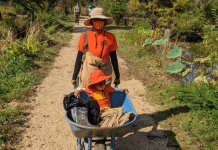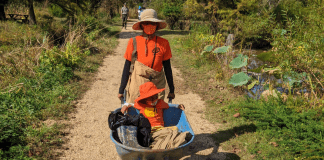I am not one for clichés about childrearing. I find them dismissive of the parenting experience and they only give me guilt about the moments when I am not appreciating everything. However, there is one cliché that, as much as I fight it, has proven to be true: “Small kids, small problems/big kids, big problems.” Big problems can pair with anxiety in children.
As my children get older, a lot of things get easier. They sleep through the night, they can use the bathroom alone, and they don’t need careful supervision in the house. Unfortunately, just as those elements get easier, new and difficult challenges emerge. My big kids have more complicated social dynamics, increasing pressure in schoolwork, and are starting to figure out who they are. To top it off, they have anxiety about all of the above. Thankfully, I still have one whose problems are resolved with a kiss and a cuddle.

The Anti-Anxiety Toolbox
Enter Working with Worry: A Workbook for Parents on How to Support Anxious Children by Melissa Kilbride, LICSW and Samantha Sweeney, PhD. This book provides an overflowing toolbox to help parents like me manage their children’s anxiety. Working with Worry shares general information about anxiety, but is mostly a workbook with a plethora of activities, making it immediately useful.
Having so many options is wonderful because different tactics work for each kid/parent. However, it can also be overwhelming to know where to start. I was thrilled to find a list of the authors’ favorite interventions. That list gave me a jumping off point and some confidence as I approached the activities. I initially chose seven interventions to study carefully and try with my children.
The Takeaways: Part One — Making a Plan to Manage Anxiety in Children
- Working with Worry provides a helpful balance between activities you do in calm moments and tools you pull out in the heat of a breakdown. It is important to think about anxiety and utilize the cognitive restructuring activities when no one is feeling upset. The tools then make more sense and can be implemented in a moment of anxiety.
- Trial and error is key and you can’t get discouraged. I tried a number of activities that didn’t go well, but I learned from each experience. That process helped me choose more carefully next time and allowed me to hone in on what might work better.
- There is no one size fits all. I have three kids and they each responded differently to each activity. They are different ages and have different levels of anxiety. They also exhibit them in different ways and have a variety of triggers. The book notes which age range is best for each activity and provides modifications, where appropriate, when working with younger children.
- Making your children partners in the planning is useful. When I first read the book, I just started to ask my kids all of these questions without giving them context about what I was doing or why. I needed to include them in the process. They should understand that there are tools out there to help them manage anxiety. I don’t need to trick them into calming down. I need to give them their own toolbox. The authors even suggest letting the children choose the activities.

The Takeaways: Part Two — Making it Work for your Children
- As I mentioned above, trial and error is important, but I would also recommend trial and trial. One self-regulation activity involved a child drinking cold water when he/she starts to experience the physical signs of anxiety. The idea is that the act of drinking cold water will regulate breathing and relax the body. The first time I tried this, my kids got angry at the suggestion of drinking water while they were upset. The second time they laughed at my ridiculousness. The third time, it worked! They drank the water and calmed down. I would note that in some ways it worked all three times as a distraction, but the third time it worked as intended.
- It can be difficult to remember the intervention techniques in Working with Worry in a heated moment, but I can remember what worked about each one. Going back to the cold water example, what worked about it on all three tries was that it was a distraction. The distraction refocused my kids on something else. In the moments that I am too flustered to pull out my official toolbox, I wing it with the general idea of what has worked before. Additionally, practicing the techniques makes it easier to pull them out when you need them. It is one thing to read about them and take notes. It is another to try them out, even on another adult so they come become natural.
- A freak out does not always mean anxiety — it could mean hunger or exhaustion. When I tried some of the interventions in a moment like that, they didn’t work. My kids needed food to calm down or to take a break and then we could do a reflection activity rather than a self-regulation activity. Helping them understand the true motivation of the outburst, allowed me to respond to it correctly.
The future of managing anxiety in children
As my children grow, the big challenges of life and the anxiety associated with them will only expand. Parenting is evolving from just keeping little ones safe and healthy to helping them navigate unchartered waters, which can cause many children extreme worry.
Moving forward, I will be keeping Working with Worry within reach. This book provides preparation for those challenging moments as well as tactics to handle all forms of anxiety in all types of children. I am grateful to have it as a guide and have even started to use some of the interventions on myself. Big Kids, Big Problems also leads to Big Kid Mom, Big Anxiety. This book will help us all get through it.















